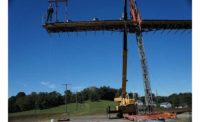
Because a number of safety standards are available for fall protection equipment manufacture and use, it can be difficult to determine which standard should be followed, depending on the work being performed and the type of structure involved. For example:
- ANSI/ASSE A10.32-2004 “Fall Protection Systems – American National Standard for Construction and Demolition Operations” is followed by many people in the construction industry and by manufacturers who make equipment for the construction industry.
- IWCA I-14.1 2001 “Window Cleaning Safety” is an American National Standard that focuses on workers who use fall protection equipment in the window-washing industry and establishes guidelines for those who design, manufacture and install fall protection equipment for this industry.
- ANSI-ASC A14.3-2008 “American National Standard for Ladders – Fixed – Safety Requirement” sets guidelines for the design and manufacture of fall arrest systems for fixed ladders.
- ANSI/ASSE Z359 2007 “Fall Protection Code” sets standards for fall protection equipment excluding fall protection equipment used in the construction industry, window cleaning and sports activities.
While the intent of each of these standards is to improve upon and create uniform manufacturing requirements for equipment used by workers at height, there is little synergy between the writers of each standard. For this reason there can be entirely different manufacturing and/or testing requirements for the same piece of equipment, depending on which standard you follow.
Sorting through the confusion
This article is not long enough to compare each of these standards in detail and to draw out each and every difference as it pertains to fall arrest equipment. For this reason, a comparison of some of the more pertinent differences between the two most frequently used standards may be more practical.
The two most-used standards are the ANSI/ASSE Z359 2007 “Fall Protection Code” and the ANSI/ASSE A10.32-2004 “Fall Protection Systems – American National Standard for Construction and Demolition Operations.” It should be noted that the over 600-page ANSI/ASSE Z359 2007 “Fall Protection Code” is a more up-to-date standard and much more comprehensive than the 35-page ANSI/ASSE A10.32-2004 construction standard, however both are used to manufacture fall arrest equipment for people who work at height.
One of the major concerns to arise in the fall protection industry in the last few years is based on the review of the test weight used to perform many of the qualification tests for fall arrest equipment such as lanyards, harnesses, self-retracting lifelines, etc. Based on comprehensive testing and a subsequent white paper titled “1.4 Multiplier Test,” it was discovered that using a 220-lb test weight mimicked the effects of a 242-lb person rather than a 310-lb person, which was the original perception*. The Z359 committee has incorporated this information into the Z359 Fall Protection Code and now requires that testing for these products be done using a 282-lb test weight (62 lbs heavier than the original 220-lb test weight).
This change, however, has not been incorporated into the A10.32 standard. This standard still allows testing of equipment using a 220-lb rigid test weight, which the fall protection community has determined does not reflect a 310-lb person as once thought.
Incompatible connections
Another long-standing issue in the world of fall protection is the issue of incompatible connections or roll-out (also known as forced rollout) of snap hooks and carabiners. Many accidents were found to be the result of an incompatible connection that put a substantial load on the gate of a snap hook or carabiner and, as a result, failed the connection. The Z359 committee opted to increase the gate-face strength on carabiners and snap hooks from 220 lbs to 3600 lbs and the side-load strength from 350 lbs to 3600 lbs to combat incompatible connections. The A10.32 standard still only requires a 220 lb and 350 lb gate- and side-load test, respectively, for snap hooks and carabiners.
When evaluating the testing requirements for lanyards, there are large discrepancies between the two standards. The Z359.13 standard has requirements for testing 100% tie-off lanyards; there is also a requirement for abrasion testing as well as environmental testing. It can be easily understood that these comprehensive testing requirements greatly affect the quality and performance of the final product. The A10.32 standard has none of these requirements.
Awareness of differences
As noted before, there are numerous additional differences between these two standards, and it can be quite a daunting and time-consuming exercise to compare all the standards that reference fall protection equipment. What is of real importance to note is that a worker can have an ANSI-compliant energy-absorbing lanyard for use in the construction industry that is tested with an inferior test weight, that uses inferior snap hooks and is not required to go through any model-specific, environmental or abrasion testing.
Workers depend on the ANSI standards to provide them with safe fall protection equipment and don’t have the knowledge that there could possibly be more than one standard for a particular piece of equipment and that the requirements between these standards could be so different. Shouldn’t a construction worker 30 feet up on an exposed platform or a maintenance worker performing maintenance on a similar platform both expect the same quality and performance in the equipment they are using?
It should be noted that ANSI standards are a voluntary consensus standard and many dedicated industry experts help write the standards. All the ANSI standards mentioned require a great deal of hard work from a number of people, and without these standards and the people who voluntarily take the time out of their busy day to write them, we would not have the quality products that save lives every day.
* The white paper, "1.4 Multiplier Test", was written by Gravitec Systems Inc. To view or download the report, visit www.gravitec.com/images/pdfs/Multiplier%20Material%20Testing%20Report%20-%2004-23-07.pdf .

